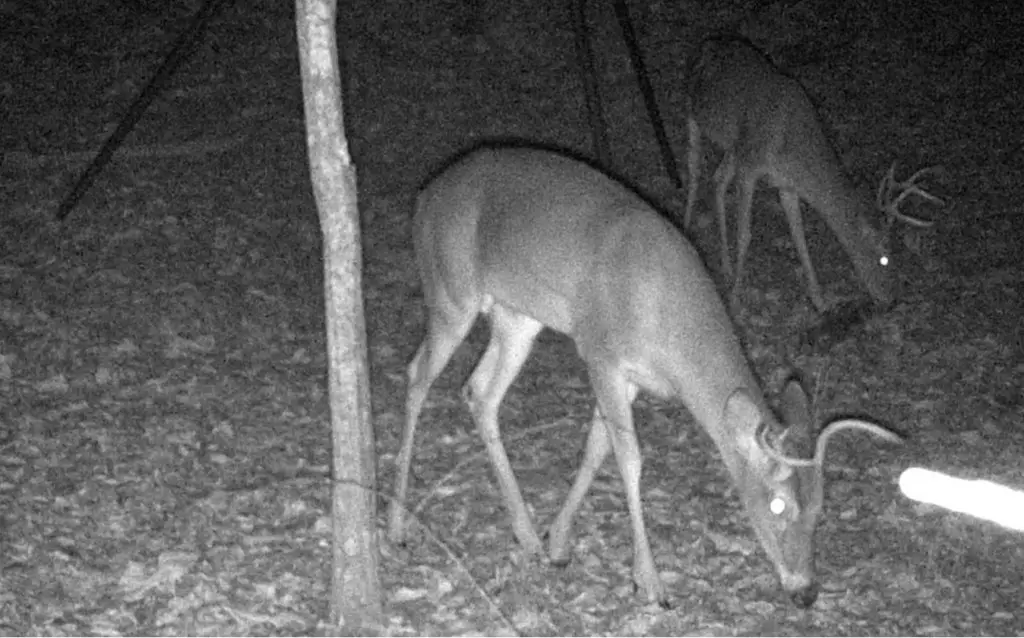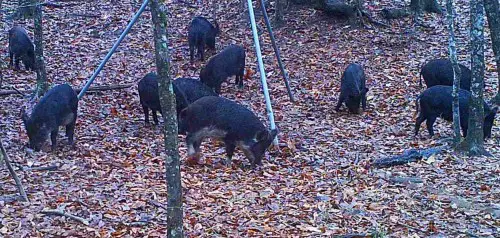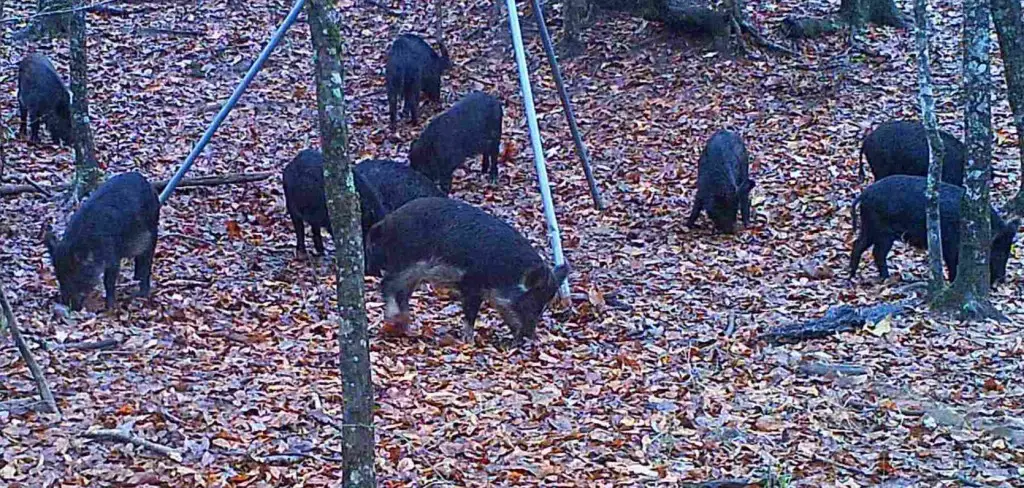I’m sure almost everyone is familiar with the ideal conditions for hunting big game (namely white tailed deer) with respect to the rut, wind speed and direction, the phase of the moon, and ambient temperatures. That is all well and good if you live in close proximity to your hunting area or have a schedule flexible enough to hunt when things are as close to perfect as possible. However, like many other hunters out there, I have to hunt when I have time off from work, and that does not always mean I’ll be deer hunting under ideal circumstances. In reality, I’ve probably done more hunting under poor conditions than the other way around over the course of my hunting years. This does not mean you can’t be successful. However, it may mean you have to change your hunting methods to fit prevailing conditions.
This past year was a great example of having to deal with poor circumstances. I had one opportunity to go hunting on the family land in East Texas for several days just before Christmas. Unfortunately, the timing of our hunt happened to coincide with a period of unseasonably warm weather. The week prior to our hunt had great hunting weather with sunny skies, temperatures in the 20-40°F range, and light winds. We recorded lots of daylight deer and hog activity at multiple locations on our land with our trail cameras.
The weather on the first day of the hunt was still relatively cool and I saw four deer visit the feeder my stand overlooked during the afternoon. However, temperatures on the remaining days of the hunt were significantly warmer and reached 78°F at one point. The wind also drastically increased during the day, reaching over 20 mph at some points.
Between the three of us, we saw a total two deer and one hog during the two and a half remaining days of the hunt. Did all of the animals leave? No, I’m convinced they stayed bedded during the warm, windy days and moved mostly at night, if at all. Indeed, we got photographs of an eight point and a four point buck eating together at one of our feeders just after midnight on the last night of our hunt; when the winds died down and the temperature had cooled to a more comfortable, but still unseasonably warm 57°F.

When temperatures are warm like that or when the wind is blowing, the deer and other big game animals are probably still there, but they are behaving differently and hunting them like you would when conditions are ideal will most likely only result in unnecessary frustration on your part. If it is early in the season and you will have an opportunity to hunt the area later in the season, it may be worth hunting conservatively, if at all, so as to not disturb the deer in the area. However, if this will be your only hunt, or your last one of the season, it may be worth it to hunt more aggressively.
With warm temperatures, deer do not need to feed as much and are more likely to bed in heavy cover for longer periods compared to when temperatures are cooler. The same is true when conditions are windy. Since high winds cause so much noise and visual stimuli from leaves and vegetation moving, deer seem much more skittish. As a result, they are more likely to stay in areas protected from the wind. Feral hogs seem to behave in a similar manner. This makes hunting them harder, but not impossible.
Perhaps the easiest way to hunt under less than ideal conditions is to leave your deer stand and start walking. You should focus on areas that have a high probability of holding deer or hogs looking for shelter from the wind or trying to cool off from the warm temperatures. Thick vegetation and creek bottoms protected from the wind are great places to start. If it gets warm enough, it may be worth it to check out known locations of wallows during the warmest part of the day to see if animals, particularly hogs, are using them to cool down.
As always, hunt into the wind and move slowly and stealthily, especially when you are close to a prime area. When you think you are moving slow enough, move slower. Take one or two steps then stop for a few seconds and closely examine the woods around you. You will probably not sneak up on a bedded animal. However, deer and hogs will often sit tight when bedded and let you approach very closely before bolting. It is possible, but unlikely that you will identify an animal while it is still bedded. A bedded deer or hog is usually very well camouflaged. So, do not look for a whole animal, as you will not likely see the entirety of it. Instead, look for small pieces of the animal, such as an ear or part of a leg. Once you recognize a small part of the animal, you may then focus on that specific area and gradually identify the rest of it.
However, you should be ready for a fast, close range shot at a moving animal when you get too close for comfort and it bolts, as this is much more common. A shotgun with buckshot (where legal) or a fast handling rifle with iron sights will come in quite handy when hunting in thick cover like this, as they are much easier to shoot at a moving target than a scoped rifle. Just ensure that you are always prepared to take a shot. There have been many times where I let my guard down and nearly had a heart attack when a bedded deer or hog jumped up less than five feet from me and crashed off through the woods before I could regain my senses and shoot.
I’ve had several notable successes using this method in the past, though more on hogs than on deer. If you can catch them feeding, or otherwise moving, hogs make enough noise that they usually don’t hear you moving. Deer are more difficult than hogs to approach, but it is by no means impossible to do so. Just ensure that you are moving slowly into the wind and are diligently examining everything around you. A deer that is not moving is surprisingly hard to spot.
Another effective way to hunt heavy cover is by conducting a drive. This requires several other hunters and a bit of coordination to make it work properly. However, it can be very effective when done correctly and many big bucks have been taken with this method over the years. When you identify a particularly promising area to hunt, such as an area of thick brush with multiple game trails leading into it, have 1-2 hunters stealthily take up positions down-wind of the area while 1-2 hunters walk into the brush with the wind at their back. The idea is to kick up any game bedded in the thicket and have them move with away from cover in the direction of the hunters set up down-wind of them.
While more difficult to execute properly, this can also be a surprisingly effective and fun hunting method. However, ensure that you take proper safety precautions when conducting a drive. All hunters must properly identify their target before shooting. It is never acceptable to shoot at a noise and this rule is even more important when there are other hunters moving in close proximity to each other while in heavy cover. Having all hunters, especially those who are moving, wear a blaze orange vest will make it easier.
While neither hunting method will guarantee success, they are both worth a try when hunting under poor conditions are the animals don’t seem to be moving normally. There are few things more frustrating than spending a three day hunting trip in a deer stand without seeing a single big game animal. In this case, it may well be worth it to change your tactics and see if you can change your luck as well.
Make sure you follow The Big Game Hunting Blog on Facebook, Instagram, Twitter, and YouTube.
NEXT: BEST 6.5 CREEDMOOR AMMO FOR HUNTING ELK, DEER, AND OTHER BIG GAME
John McAdams is a proficient blogger, experienced shooter, and long time hunter who has pursued big game in 8 different countries on 3 separate continents. John graduated from the United States Military Academy at West Point and is a veteran of combat tours with the US Army in Iraq & Afghanistan. In addition to founding and writing for The Big Game Hunting Blog, John has written for outdoor publications like Bear Hunting Magazine, The Texas State Rifle Association newsletter, Texas Wildlife Magazine, & Wide Open Spaces. Learn more about John here, read some of John’s most popular articles, and be sure to subscribe to his show: the Big Game Hunting Podcast.




